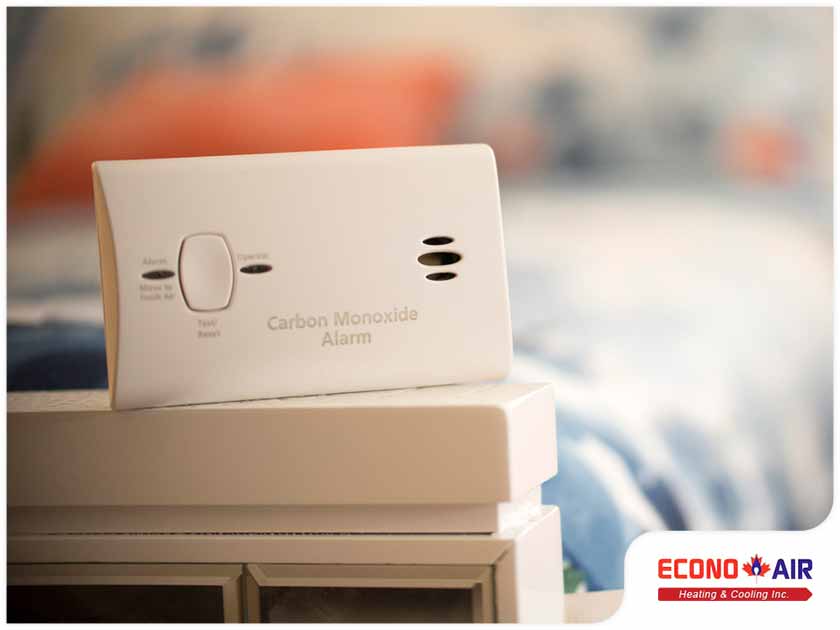Headaches are often a sign of other underlying health problems, but if everyone in your household frequently experiences bad headaches, your AC, furnace or boiler installation may be the culprit. The most common reason for this is carbon monoxide, a normal byproduct of many heating systems.

Normally, carbon monoxide, or CO, from your heat exchanger is directed away from your interior and released through the exhaust vents. When the heat exchanger gets damaged, CO can seep into your home and reach dangerous levels. Here are a few safety tips from our experts at Econoair Heating & Cooling Inc. on how to prevent this problem from occurring.
Schedule regular inspections. Make sure to include your carbon monoxide detector when you call your air conditioner installation technician for seasonal HVAC inspections and tune-ups. If you don’t already have a CO monitor or detector installed, ask your contractor to install one for you. CO is a colorless, odorless gas that’s lighter than air. CO is negligible in small amounts, but when it’s concentrated in an enclosed space like your home it can reach dangerous levels.
Notice the signs. Because CO is colorless and odorless, it’s important to be familiar with the common symptoms associated with CO poisoning. These include the following:
- Dizziness
- Confusion
- Weakness
- Chest pains
- Nausea
Release carbon monoxide outside using your chimney. Homeowners who opt for a ductless installation of their HVAC equipment may choose to direct CO exhaust up their chimney. This is certainly a possible solution, but you should also include regular inspections of your chimney liner to ensure the gas is vented outside and not toward your home. Chimney liners can crack and fail just like your heat exchanger, so you should keep them in good condition at all times.
Keep your home safe from the dangers of carbon monoxide with the help of our professionals at Econoair Heating & Cooling Inc.. Give us a call at 905-763-2400 or fill out our contact form to schedule an inspection appointment or request a free estimate on new HVAC installations today.
